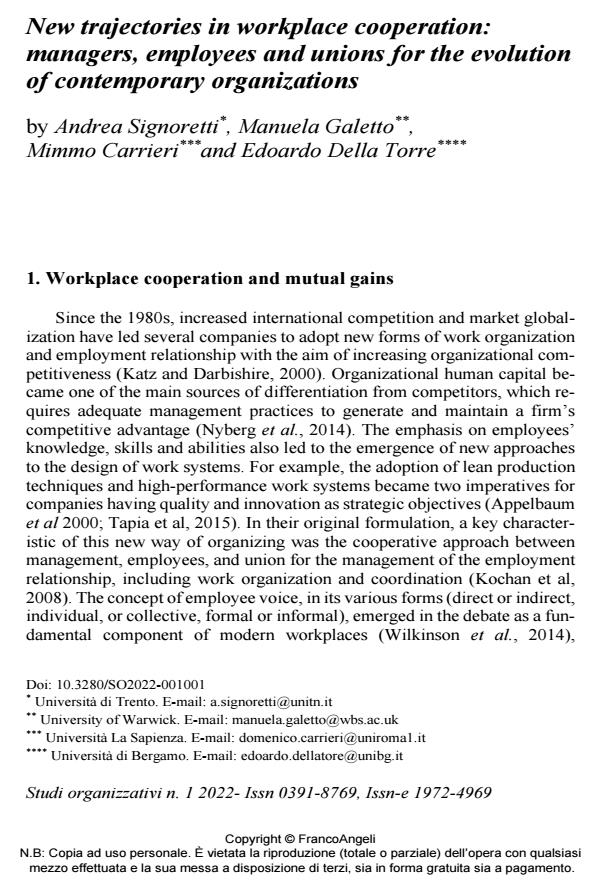New trajectories in workplace cooperation: managers, employees and unions for the evolution of contemporary organizations
Journal title STUDI ORGANIZZATIVI
Author/s Andrea Signoretti, Manuela Galetto, Mimmo Carrieri, Edoardo Della Torre
Publishing Year 2022 Issue 2022/1
Language English Pages 12 P. 7-18 File size 193 KB
DOI 10.3280/SO2022-001001
DOI is like a bar code for intellectual property: to have more infomation
click here
Below, you can see the article first page
If you want to buy this article in PDF format, you can do it, following the instructions to buy download credits

FrancoAngeli is member of Publishers International Linking Association, Inc (PILA), a not-for-profit association which run the CrossRef service enabling links to and from online scholarly content.
- Still in search of organizational democracy: exploring new opportunities and constraints Luca Carollo, Lisa Dorigatti, Annalisa Murgia, Simon Parker, Thomas Steger, in STUDI ORGANIZZATIVI 2/2024 pp.7
DOI: 10.3280/SO2023-002001
Andrea Signoretti, Manuela Galetto, Mimmo Carrieri, Edoardo Della Torre, New trajectories in workplace cooperation: managers, employees and unions for the evolution of contemporary organizations in "STUDI ORGANIZZATIVI " 1/2022, pp 7-18, DOI: 10.3280/SO2022-001001